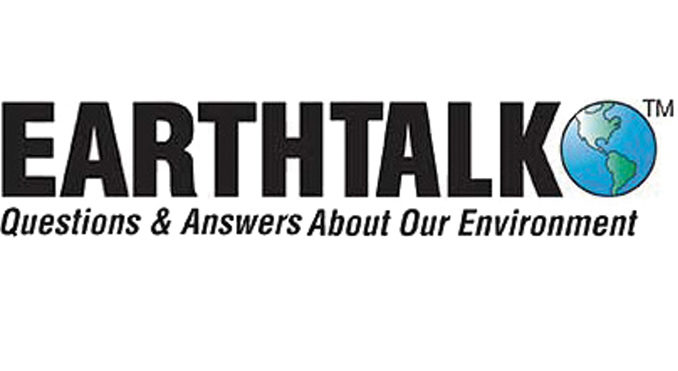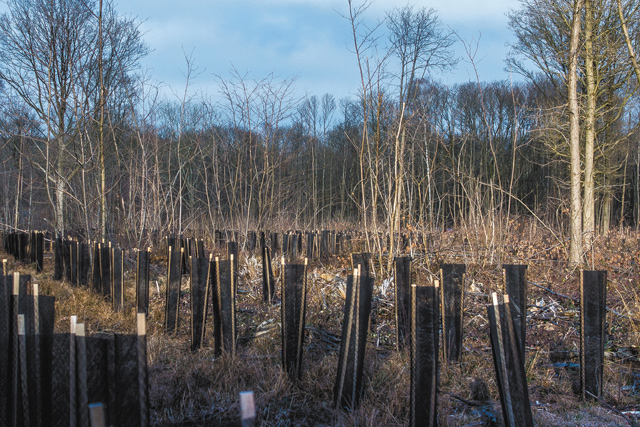
Dear EarthTalk: I saw a news item about overhauling classic old cars with electric engines, and wondering if this can be done with any old car, such as my 1999 Subaru Outback? If this is feasible, maybe I should reconsider my plan of trading up for a new Prius. ~ Tim St. Germain, Boise, ID
It’s true that there’s never been a better time to convert an old gas guzzling car into an emissions-free electric vehicle (EV), but some makes and models are better suited for a so-called “EV swap” than others.
Michael Bream of San Marcos, California’s EV West, which made news recently with its conversions of old VWs and Porsches into EVs, says you could convert a ‘99 Subaru—but EV Swaps are typically reserved for classic cars. “A newer Subaru has a ULEV certified (low emission) engine, so it’s not as bad a polluter as a classic car, and doesn’t suffer from reliability and power issues that classic cars typically suffer from,” he says. “A typical conversion of a Subaru would cost about the same with parts and labor as a brand-new all-wheel drive Tesla Model 3, so unless your vehicle is extremely well loved, or you can’t stand the thought of selling it, then it might be a better solution to buy or lease a new EV.”

EV West is one of a handful of garages across North America now specializing in EV conversions. Some others include: Zelectric Motors (San Diego, CA), ElectricGT (Chatsworth, CA), Make Mine Electric (Sebastopol, CA), Electric Vehicles of Washington (Bellingham, WA), Shockwave Motors (Russellville, TN), Epic Car Conversions (Toronto, ON) and Green Shed Conversions (Crystal River, FL).
If you don’t want to wait to get your car converted by one of these shops, you’ll just have to do it yourself (or find a local mechanic looking for an interesting project). Luckily lots of companies now sell EV conversion kits (Canadian Electric Vehicles, Electro Automotive, Wilderness Electric Vehicles, DIY EV, EV Source, Metric Mind Corporation, EV Drive) that include new engines, batteries and components. Expect to spend at least $8,000 on all the parts needed for the job (and tack on an additional ~50 percent more if you opt for longer-range lithium ion batteries). The labor will be up to you. DIYers should check out EVRater.com’s “How to Build Your own Electric Vehicle in 5 Easy Steps” or Mechanic Doctor’s “How to Convert Your Car to an Electric Vehicle” for step-by-step instructions. Meanwhile, California-based EV4U runs “3-Day Hands-On Conversion Workshops” near Sacramento for $495.
With a new base model Prius starting at $23k, you may well be better off doing the EV Swap on your old car. According to EVW, the operating costs of driving a Prius hybrid ($0.14/mile) are about four times what it costs to get around in an EV (whether native or a conversion). “In addition to the fuel savings, electric cars do not need oil changes, spark plugs, distributors, timing belts, etc.,” EVW adds.
What you won’t get is that new car smell or the nervous feeling of driving a brand-new car off the dealer’s lot. But you will get the satisfaction of knowing that you saved two tons of metal from the junk heap—and saved the world the trouble of sourcing materials for and building another brand-new Prius.
Dear EarthTalk: I’ve heard that China and other nations have gone gangbusters with reforestation projects that are ambitious enough to have a significant impact on cutting carbon emissions. Why aren’t we also doing this here in the U.S.? ~ Mickie Infurcia, Hamden, CT
A recent Boston University (BU) study tracking satellite data of vegetation coverage found that the world is indeed getting greener overall, largely thanks to an ambitious reforestation program underway in China.
“China alone accounts for 25 percent of the global net increase in leaf area with only 6.6 percent of global vegetated area,” says lead researcher Chi Chen of BU’s Department of Earth and Environment. “This is equal to the net greening in the three largest countries, Russia, the United States and Canada, that together hold 31 percent of the global vegetated area.”
China’s reforestation efforts date back to the 1970s when the government started requiring every citizen over age 11 to plant at least three saplings every year to augment official government-backed reforestation projects. The result has been the planting of some 66 billion trees across some 12,000 miles of Northern China over the last few decades, with the so-called “Great Green Wall of China” expected to snake along some 2,800 continuous miles by 2050.

China isn’t the only country hell-bent on reforestation. Pakistan embarked on its Billion Tree Tsunami campaign in 2014 and is well on its way of achieving its goal of restoring healthy forests to some 350,000 hectares of degraded land. Meanwhile, Australia’s “20 Million Trees Program” aims to re-establish green corridors and urban forests across the country while mitigating climate impacts by facilitating the planting of 20 million trees by 2020. Another major reforestation effort with global impact is happening in Brazil, where the non-profit Conservation International is helping restore 30,000 of the hardest hit hectares across the so-called “arc of deforestation” in the Amazon rainforest as a key part of that country’s Paris climate agreement goal of reforesting 12 million hectares by 2030.
Here in the U.S., our forebears chopped down practically every tree they could until around 1920, but then we started to regain some of the lost tree cover over the next 40 years as abandoned farms reverted back to forest. Since then, we are barely net positive in forest cover as tree planting campaigns by the U.S. Forest Service and the non-profit Arbor Day Foundation have made up for losses from development and logging. That said, increased reforestation is not a major part of American efforts to meet climate mitigation targets given more practical ways we can achieve quicker overall emissions reductions.
Beyond the U.S., though, there is still lots of “low-hanging fruit” around the world in the form of other areas that would be good candidates for reforestation. The non-profit World Resources Institute (WRI) maintains the Atlas of Forest & Landscape Restoration Opportunities, which includes global overlay maps on current forest coverage, potential forest coverage, forest condition and human pressure on forest landscapes. According to WRI, upwards of two billion hectares of degraded or logged over forest lands around the world are ripe for restoration work if only we can muster the political will to make it happen.
EarthTalk® is produced by Roddy Scheer & Doug Moss for the 501(c)3 nonprofit EarthTalk.
To donate, visit www.earthtalk.org. Send questions to: question@earthtalk.org

